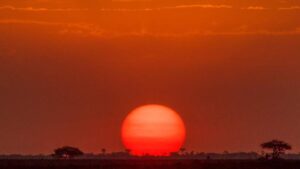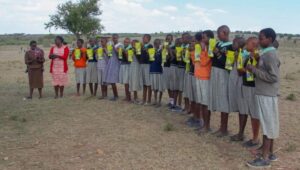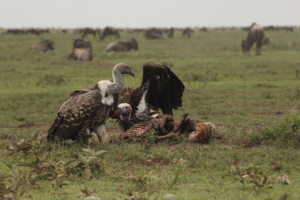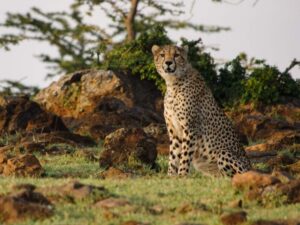A personal account by one of the guests, Sarah Newton ARPS, who joined the first WalkingWomen Safari in partnership with Alison Mees
and here are some of her photos …
There’s a first time for everything, and Kenya with wildlife photographer Alison Mees did not disappoint! In fact, the trip exceeded my expectations. Slightly apprehensive, knowing only a little learned from studying East Africa for anthropology many years ago, having just met Alison on Zoom and not knowing the three other women in the group, I flew into Nairobi two days early to acclimatise to the shift from freezing temperatures in the UK to high 20s/low 30s in Kenya and to get a feel for the country and culture before the tour began.
Alison and my three travel companions were wonderful. Within minutes of meeting, having exchanged information about ourselves, friendly banter flowed and continued throughout, supporting each other and enjoying sharing the trip as a small group.
Flights in small planes landing on rough ground with, on one occasion, aborting and successfully reattempting landing at the last moment as animals were on the ‘runway’ and more than once having unanticipated additional landings and pickups at various airstrips, all added to the sense of adventure. We were pleased to have female pilots on two occasions, Captain Winnie and Captain Chelsea, who had gained her commercial pilot’s license 8 months previously. These internal flights saved ground travel time over vast distances as seen from the air and meant more time could be spent at the camps and on safaris.
Landing at Amboseli in view of Mt Kilimanjaro on the first morning was spectacular. Greeted by our driver and guide Dennis, the first of three over the trip, with a camp table set out serving coffee and cakes, was a great welcome, “Karibu” in Swahili. In no time, we were off on a game drive in the National Park. Seeing elephants, zebras, and flamingos, including one caught in the water by an African Rock Python, swiftly introduced us to the beauty of the creatures and nature’s cycle of life and death.

We all had more than one camera ranging from phones to bridge and full frame, with two of the four having bespoke 600mm lenses. I took my phone, a Nikon D750 with a 70-300mm lens and a Sony RX10 IV with an integral 25-600mm lens. Having options proved useful in terms of responding to distance from the subjects and speed of capturing a passing moment. It was also reassuring to know if one failed (battery, memory card or simply broke), we had a backup. Alison was attentive to each of our needs and level of ability with our equipment. Histograms and ISO levels, shutter speeds and aperture settings became common parlance, constantly readjusting to the changing light of dawns and dusks and, on two occasions, night drives.
We stayed at Porini camps at Amboseli, Selenkay Conservancy (3 nights), Mara, Ol Kinyei Conservancy with excursions to Naboisho Conservancy (4 nights), and four of us extended the trip for two nights at Lion Camp, Olare Motorogi Conservancy. All the camps were staffed by Maasai men who were very good hosts; nothing was too much trouble. Meals were great, with my vegetarianism being well catered for. Buckets of very hot water were provided and fed into a shower head whenever we requested one, as were buckets of water, lines and pegs for hand-washing items. Lion camp provided a laundry service with clothes returned pressed and neatly folded. The camps run on solar power. I took the opportunity to visit ‘backstage’. I was impressed by the camp kitchens, charcoal fridges and chefs (eg Wambua, whose name means born in the rainy season) and how they managed to produce substantial delicious hot and cold breakfasts, two-course lunches (1 pm) and three-course evening meals (8 pm).
Early starts …. And sundowners!
Early starts at 5:30/6 am. Game drives were kicked off with coffee/tea, biscuits and hot water for face/hands washing brought to your tent half an hour before departure. Breakfasts around 9 am, either back at camp or, more often, out in the field, were followed by a second drive until 11:30 am/noon. Lunch, siestas and catching up on tasks followed (it was in the upper 20s/low 30s by then) until tea and cake at 3:45 pm before a third game drive from 4-7 pm, including ‘sundowners’ in spectacular locations. Twice we went out red light searching for nocturnal animals from 9-10 pm (and found spring hares and foxes).

Two visits, one to a Maasai village and one to a school to deliver donated washable and reusable sanitary pads, were particularly poignant. The first was fascinating to see the mud and sticks round homes, people and animals and to learn how young children start herding with sheep, goats and small calves and then progress to cows and their own herds. We witnessed huge herds being moved by Maasai men across vast distances when travelling. Maasai men, women and children turned out to greet us and sing both on arrival and when we were leaving. We visited inside one home courtesy of a Maasai wife, with tiny rooms and no apparent windows to the outside, just occasional tiny unglazed holes (I’ve since read that the women build the homes).

Clearly, this was an event that occurred regularly for visitors. There were no attempts to sell any of their beautiful craft and beadwork on the visit, as the little shop at the camp was the place to make purchases. It felt like a special privilege to have been there and welcomed so graciously, but at the same time, I wondered about the intrusion and possible impact on the Maasai people and their culture and traditions.
Much much more than an ordinary Safari..
The second visit to a school was to distribute packs of reusable sanitary wear. We were greeted by the Senior Warden in Ol Kinyei conservancy, who had conducted research into the reasons why girls may stop coming to school when menstruation starts. A lack of sanitary materials or the means to purchase them is not the only reason. The research found limited toilet facilities at many schools. There has subsequently been an investment to develop separate facilities for girls where funding, including donations, has become available.
This article explains other barriers to girls being able to access education at both primary and secondary levels http://maasaigirlseducation.org/the-need/the-life-of-a-maasai-woman/ The afternoon felt very significant; for me, a reminder of how my educational opportunities have been taken for granted as a right and how for the young girl’s something so small yet significant and practical that might contribute to keeping them in education beyond primary years.
Turning to the environment and wildlife, it is very difficult to explain the impact both have had on me. Kenya is 2.4 times the size of the UK, its vastness well illustrated from the air and by looking towards the seemingly never-ending views towards the horizon on the ground. Amboseli was drier than the Mara. We found several intact bodies of zebra and gazelle, which told of death from illness/old age or, probably according to our guide, starvation due to drought which is becoming more common due to climate change. These were in contrast to bones that had clearly derived from death by predation and then cleaned up by hyenas and vultures, of whom we saw a few at work along with jackals. The Maasai Mara was greener, and we had rain some nights. One day when we were still travelling, we experienced the full pelt of a sudden and heavy downpour.

Lions, lionesses and cubs, cheetah mothers and offspring, leopards and a son were seen. Lions, thankfully apparently some distance from the camp were heard as we lay in our tents at night, accompanied by nearby sounds of grazing hippos, buffalo and the patter of warthogs trotters. We saw families of hippos wallowing in putrid pools, giraffes feeding, sometimes only visible by their head poised above a tree, buffalo, warthogs wildebeest, eland, Grant’s and Thomson’s gazelle, kudu, dik-dik, dwarf, slender and banded mongoose, vervet monkeys, yellow and olive baboons, bushbaby, honey badger, springhare, squirrel, African hare, bat-eared fox, leopard tortoises red-headed agama lizards and many others spotted by my companions and almost missed by me! I also saw and learned a lot about native and migratory birds from the group and our guide; eagles, vultures, giant eagle owls, hornbills, guinea fowl, storks, cranes, egrets, herons, flamingos, the kori bustards and secretary birds to name a few with lilac-breasted roller and superb starling among my favourites with their beautiful iridescent colours, but I missed seeing a malachite kingfisher.
As for the ‘walking,’ there was very little of it which suited me. On an afternoon walk around the Mara camp, we were introduced to the native trees (e.g. Croton and Acacia). We found leopard tortoises and a tiny waterbuck left in a safe area while its mother was out hunting. The high temperatures and need for vigilance precluded walks in areas where we might meet wildlife face to face. Our observations of bushes among which unseen lions slept then suddenly emerged confirmed travel in the land cruisers was the safest place to be. Getting down to basics, our driver guides vetted the safest locations to use for open-air bathroom stops
Would you do it again?
My first on this trip was; a visit to this part of Africa, safari, linking up with Walking Women and Game Watchers, a photography tour, a bucket shower, a holiday with people I had never met, small plane journeys, close encounters with wildlife and meeting Maasai, people about whom I had learned so many years ago.…. Would I do it all again? Yes, in a flash, despite the bumpy rides across uneven ground, rocks and riverbeds! An adventure I will treasure forever with newfound friends I plan to keep in touch with.
Reference: The Life of a Maasai Woman http://maasaigirlseducation.org/the-need/the-life-of-a-maasai-woman/ © Copyright 2023 Maasai Girls Education Fund. All Rights Reserved


